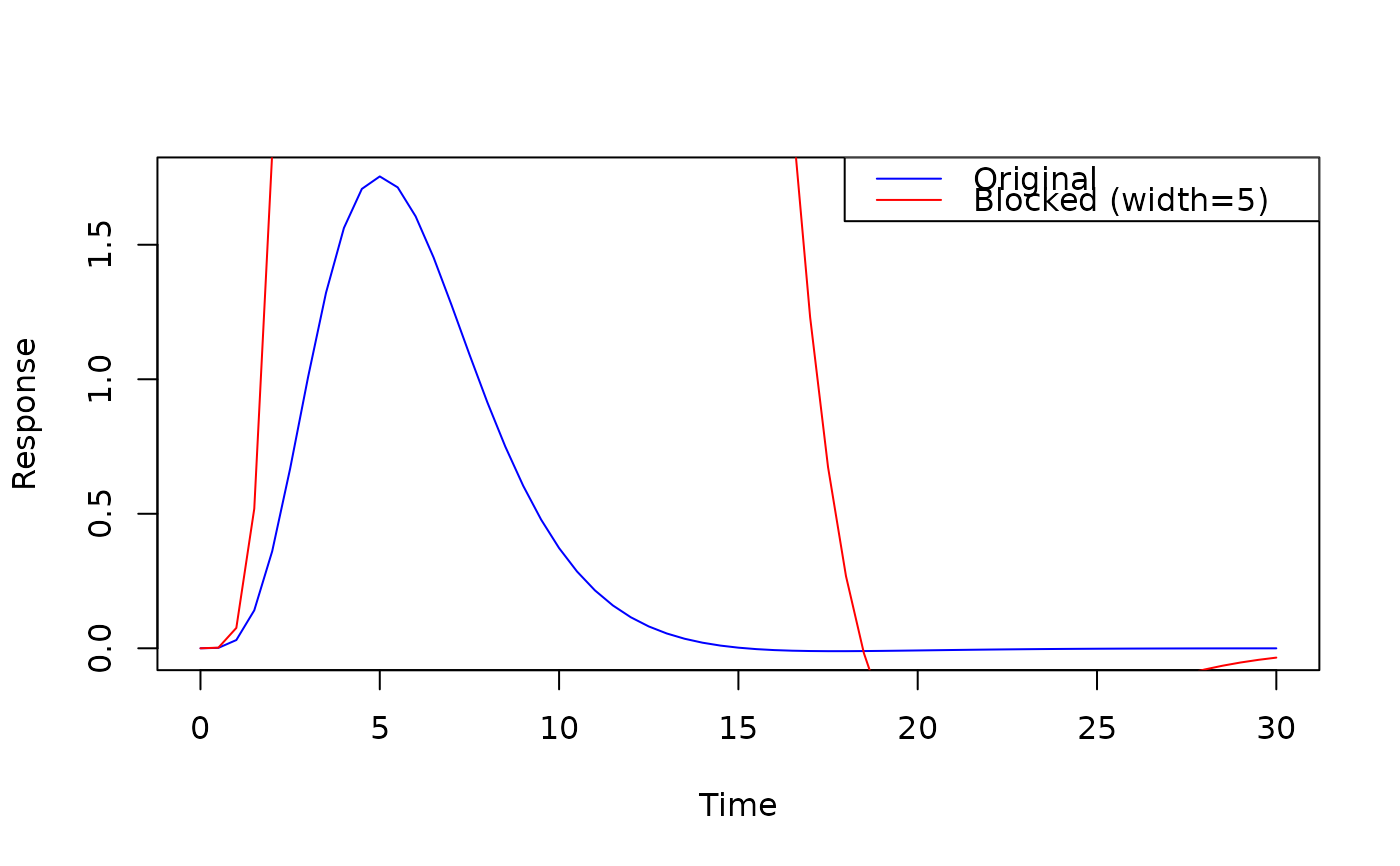Creates a new HRF object representing a response to a sustained (blocked) stimulus by convolving the input HRF with a boxcar function of a given width.
Arguments
- hrf
The HRF object (of class `HRF`) to block.
- width
The width of the block in seconds.
- precision
The sampling precision in seconds used for the internal convolution (default: 0.1).
- half_life
The half-life of an optional exponential decay applied during the block (default: Inf, meaning no decay).
- summate
Logical; if TRUE (default), the responses from each time point within the block are summed. If FALSE, the maximum response at each time point is taken.
- normalize
Logical; if TRUE, the resulting blocked HRF is scaled so that its peak value is 1 (default: FALSE).
See also
Other HRF_decorator_functions:
lag_hrf(),
normalise_hrf()
Examples
blocked_spmg1 <- block_hrf(HRF_SPMG1, width = 5)
#> Warning: Parameters P1, P2, A1, .width, .precision, .half_life, .summate, .normalize are not arguments to function SPMG1_block(w=5) and will be ignored
t_vals <- seq(0, 30, by = 0.5)
plot(t_vals, HRF_SPMG1(t_vals), type = 'l', col = "blue", ylab = "Response", xlab = "Time")
lines(t_vals, blocked_spmg1(t_vals), col = "red")
legend("topright", legend = c("Original", "Blocked (width=5)"), col = c("blue", "red"), lty = 1)
